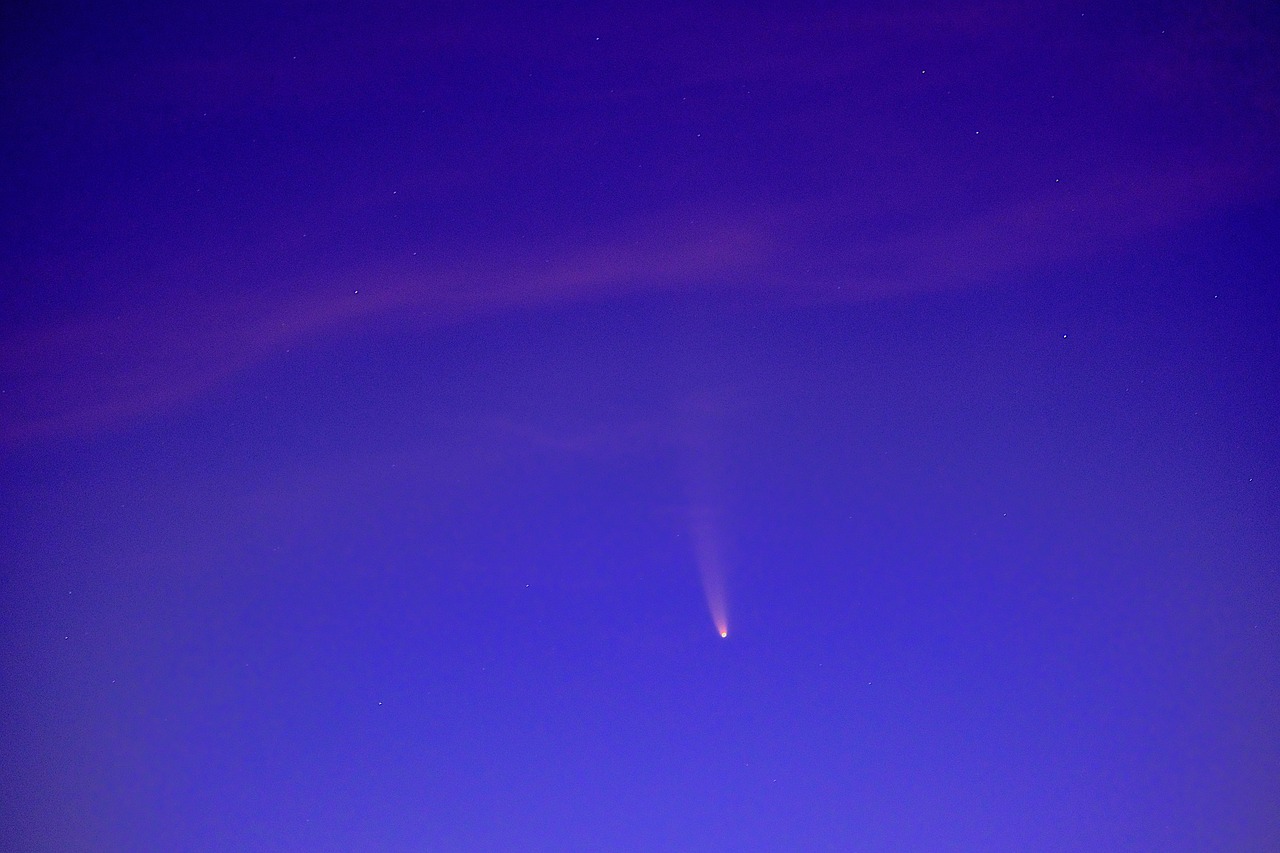Science
NASA Investigates Unusual Comet 3I/ATLAS; New Findings Emerge

A recent photograph of the comet 3I/ATLAS has ignited discussions among scientists and space enthusiasts, raising questions about its unusual characteristics. The image, shared on October 20, 2025, by a space enthusiast known as Dobsonian Power, reveals a circular shape adjacent to the comet, suggesting there may be more to 3I/ATLAS than previously understood. This photo includes NASA’s official coordinates, marking the comet’s position at 16:00 UTC on that date.
In the tweet accompanying the image, the user described the observation made through a solar telescope, noting what appeared to be a “front heated shield” directed towards the sun, along with a faint puff resembling a small cone. The account emphasized the image’s authenticity by stating it was a raw, unprocessed photograph, which has drawn both intrigue and skepticism from the scientific community.
Potential Alien Connections and Rare Alloy Emissions
While some speculate that 3I/ATLAS could harbor alien life forms, experts are exploring more grounded explanations for its peculiar behavior. Reports from the New York Post indicate that the comet may be emitting a rare alloy known as nickel tetracarbonyl. Dr. Avi Loeb, an astrophysicist from Harvard University, pointed out that this alloy is typically produced through human industrial processes, making its presence in a comet highly unusual.
Images taken of 3I/ATLAS by the Keck II telescope in August revealed that the comet is releasing approximately four grams of nickel per second without any detectable iron—a phenomenon not commonly seen in comets. Dr. Loeb remarked, “There is only one place where that is known to exist, and that is in industrially produced nickel alloys.” This discovery adds to the mystery surrounding 3I/ATLAS, which was first documented by the Hubble Telescope on July 21, 2025.
Absence of a Tail and Implications for Research
Dr. Loeb noted the comet’s lack of a tail, a typical feature of comets that is usually observed extending away from the sun. This absence raises further questions, as he stated, “We usually see beautiful tails extending from the object away from the sun, and in this case, there was no evidence for such a tail.”
Experts typically expect comets to contain certain minerals, including nickel and iron. The distinct mineral composition of 3I/ATLAS sets it apart from other recent comets that have passed near Earth. Although the presence of nickel tetracarbonyl is unusual, researchers from the Keck Observatory suggest that the phenomenon may be a natural occurrence rather than an indication of extraterrestrial involvement.
The investigation into 3I/ATLAS is ongoing, with scientists eager to gather more data as the comet approaches the sun in the coming weeks. Observatories around the world are preparing for further observations, hoping to unravel the mysteries surrounding this enigmatic celestial body.
-

 Entertainment2 weeks ago
Entertainment2 weeks agoAndrew Pierce Confirms Departure from ITV’s Good Morning Britain
-

 Health4 months ago
Health4 months agoFiona Phillips’ Husband Shares Heartfelt Update on Her Alzheimer’s Journey
-

 Health4 months ago
Health4 months agoNeurologist Warns Excessive Use of Supplements Can Harm Brain
-

 Science2 months ago
Science2 months agoBrian Cox Addresses Claims of Alien Probe in 3I/ATLAS Discovery
-

 Entertainment1 week ago
Entertainment1 week agoGogglebox Star Helena Worthington Announces Break After Loss
-

 Science2 months ago
Science2 months agoScientists Examine 3I/ATLAS: Alien Artifact or Cosmic Oddity?
-

 Entertainment1 month ago
Entertainment1 month agoTess Daly Honoured with MBE, Announces Departure from Strictly
-

 Entertainment2 months ago
Entertainment2 months agoLewis Cope Addresses Accusations of Dance Training Advantage
-

 Entertainment5 months ago
Entertainment5 months agoKerry Katona Discusses Future Baby Plans and Brian McFadden’s Wedding
-

 Science2 months ago
Science2 months agoNASA Investigates Speedy Object 3I/ATLAS, Sparking Speculation
-

 Entertainment5 months ago
Entertainment5 months agoEmmerdale Faces Tension as Dylan and April’s Lives Hang in the Balance
-

 World4 months ago
World4 months agoCole Palmer’s Cryptic Message to Kobbie Mainoo Following Loan Talks










